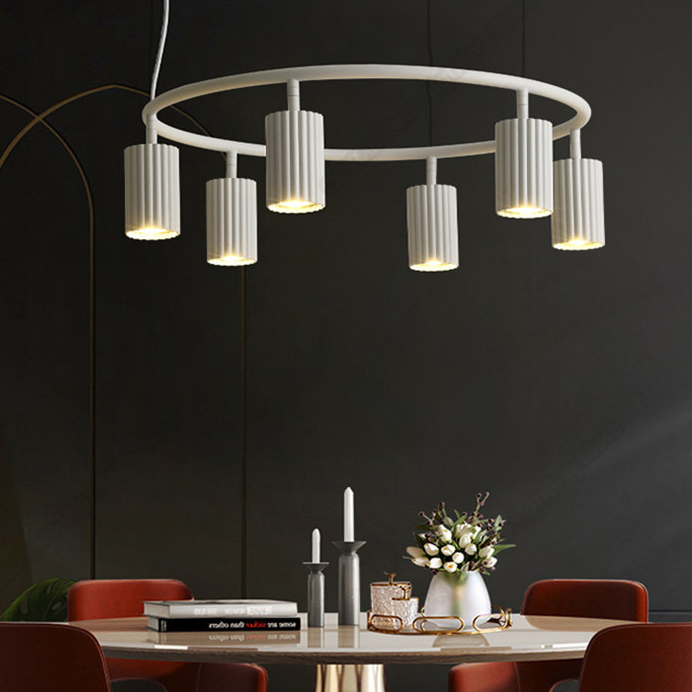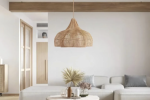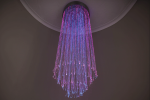Lighting plays a crucial role in home decor. It not only illuminates a space but also sets the mood and ambiance of a room. The right lighting can enhance the overall aesthetic appeal of your home and create a warm and inviting atmosphere. From chandeliers to LED fixtures Shiion, there are countless options available to suit every style and preference. In this article, we will explore the importance of lighting in home decor, discuss different lighting techniques and trends, and provide tips for choosing the right fixtures for your space.
The Importance of Lighting in Home Decor: Enhancing Your Space with the Right Illumination
Lighting has the power to transform a room and create a desired ambiance. Whether you want to create a cozy and intimate atmosphere or a bright and energetic space, the right lighting can make all the difference. Different types of lighting fixtures can be used to achieve different effects. For example, ambient lighting provides overall illumination to a room, while task lighting is focused on specific areas for activities such as reading or cooking. Accent lighting is used to highlight artwork or architectural features.
Using a combination of these different types of lighting can help create a balanced and visually appealing space. For instance, in a living room, you might have an overhead chandelier for ambient lighting, table lamps for task lighting, and wall sconces for accent lighting. By strategically placing these fixtures throughout the room, you can create layers of light that add depth and dimension to the space.
Understanding the Basics of Lighting Design: Tips and Tricks for Creating a Perfect Ambiance
To create a perfect ambiance in your home, it is important to understand the basics of lighting design. There are three main types of lighting: ambient, task, and accent.
Ambient lighting provides overall illumination to a room and is usually achieved through ceiling-mounted fixtures such as chandeliers or recessed lights. Task lighting is focused on specific areas where activities are performed, such as reading or cooking. This type of lighting can be achieved through table lamps, floor lamps, or under-cabinet lights. Accent lighting is used to highlight specific objects or architectural features in a room. This can be achieved through the use of wall sconces, track lighting, or picture lights.
When designing your lighting scheme, it is important to consider the scale and proportion of the fixtures in relation to the size of the room. A small chandelier may get lost in a large living room, while a large chandelier may overwhelm a small dining room. It is also important to choose the right bulbs for your fixtures. LED bulbs are energy-efficient and long-lasting, while incandescent bulbs provide a warm and cozy glow.
Exploring the Latest Trends in Chandelier Designs: From Minimalist to Ornate
Chandeliers are a popular choice for adding elegance and sophistication to any room. They come in a wide range of styles and designs, from minimalist and modern to ornate and traditional. One popular trend in chandelier design is the use of geometric shapes and clean lines. These minimalist chandeliers add a contemporary touch to any space.
Another trend is the use of natural materials such as wood or rattan in chandelier design. These organic materials add warmth and texture to a room and create a cozy and inviting atmosphere. For those who prefer a more traditional look, ornate chandeliers with crystal accents are always a classic choice.
Chandeliers can be incorporated into various rooms in your home. In the dining room, a chandelier can serve as a focal point above the table, providing both ambient and task lighting. In the bedroom, a chandelier can add a touch of luxury and create a romantic atmosphere. In the entryway, a chandelier can make a grand statement and set the tone for the rest of the home.
How to Choose the Right Chandelier for Your Home: Factors to Consider
When choosing a chandelier for your home, there are several factors to consider. First, you need to consider the size and scale of the chandelier in relation to the room. A general rule of thumb is to choose a chandelier that is about one-third the width of the table or surface it will be placed above. For example, if you have a dining table that is 72 inches wide, a chandelier that is 24 inches in diameter would be appropriate.
Next, you need to consider the style and design of the chandelier. It should complement the overall aesthetic of your home and enhance the decor. If you have a modern and minimalist home, a sleek and simple chandelier would be a good choice. If you have a more traditional home, an ornate and crystal chandelier would be more fitting.
Placement and installation are also important considerations. The chandelier should be hung at the right height to ensure proper illumination and visual impact. In a dining room, the bottom of the chandelier should be about 30 to 36 inches above the table. In an entryway or foyer, the bottom of the chandelier should be at least 7 feet above the floor.
Innovative Lighting Effects: Adding Drama and Personality to Your Living Space

In addition to choosing the right fixtures, there are various lighting effects that can be used to add drama and personality to your living space. Uplighting is a technique where lights are directed upwards towards a wall or ceiling, creating a soft and indirect glow. This effect can make a room feel larger and more spacious.
Downlighting is another popular technique where lights are directed downwards from the ceiling or mounted on walls. This creates a focused and concentrated beam of light, perfect for highlighting artwork or architectural features. Wall washing is a technique where lights are placed at an angle to wash a wall with light, creating a soft and diffused glow.
Lighting can also be used to highlight artwork and architectural features in your home. By placing lights above or below a piece of artwork, you can draw attention to it and create a focal point in the room. Similarly, by placing lights at the base of a column or along a staircase, you can highlight the architectural details and add visual interest.
The Magic of Dimmers: Creating a Versatile Lighting Scheme for Any Occasion
Dimmers are a great tool for creating a versatile lighting scheme in your home. They allow you to adjust the brightness of the lights to create different moods and atmospheres. For example, you can dim the lights in the living room for a cozy movie night or brighten them up for a lively gathering with friends.
Dimmers also help save energy and extend the life of your bulbs. By reducing the amount of electricity flowing to the bulbs, dimmers can help lower your energy consumption and reduce your electricity bills. They also help prolong the life of your bulbs by reducing the heat generated.
To use dimmers effectively, it is important to choose the right type of bulbs. Not all bulbs are compatible with dimmers, so be sure to check the packaging or consult with a lighting professional. LED bulbs are a great choice for use with dimmers as they are fully dimmable and provide consistent light output.
The Art of Layering Lights: Achieving a Perfect Balance of Functionality and Aesthetics
Layering lights is an art that involves combining different types of lighting to achieve a perfect balance of functionality and aesthetics. By using a combination of ambient, task, and accent lighting, you can create a well-lit space that is visually appealing and functional.
Start by determining the main source of ambient lighting in the room. This could be an overhead chandelier or recessed lights. Next, add task lighting to specific areas where activities are performed, such as reading or cooking. This could be achieved through table lamps, floor lamps, or under-cabinet lights. Finally, add accent lighting to highlight specific objects or architectural features in the room. This could be achieved through the use of wall sconces, track lighting, or picture lights.
When layering lights, it is important to consider the placement and spacing of the fixtures. They should be evenly distributed throughout the room to ensure proper illumination. It is also important to consider the color temperature of the bulbs. Warm white bulbs (around 2700K) create a cozy and inviting atmosphere, while cool white bulbs (around 5000K) create a bright and energetic atmosphere.
The Power of LED Lighting: Energy-Efficient and Stylish Solutions for Modern Homes
LED lighting has become increasingly popular in recent years due to its energy efficiency and stylish design options. LED bulbs use up to 80% less energy than traditional incandescent bulbs and can last up to 25 times longer. This not only helps reduce your energy consumption but also saves you money on your electricity bills.
LED fixtures come in a wide range of styles and designs to suit every taste and preference. From sleek and modern to vintage-inspired, there is an LED fixture for every room in your home. LED strips are a popular choice for under-cabinet lighting or accent lighting, as they are flexible and can be easily installed in tight spaces.
LED bulbs also offer a range of color options, from warm white to cool white to daylight. This allows you to create different moods and atmospheres in your home. For example, warm white bulbs create a cozy and intimate atmosphere, while cool white bulbs create a bright and energetic atmosphere.
Lighting Up Your Outdoor Space: Creative Ideas for Illuminating Your Garden and Patio
Don’t forget about your outdoor space when it comes to lighting. Outdoor lighting can enhance the beauty of your garden and patio and create a warm and inviting atmosphere. There are various ways to use lighting to illuminate your outdoor space.
One popular option is to use string lights to create a magical and whimsical atmosphere. String lights can be hung from trees, pergolas, or fences to create a soft and romantic glow. They can also be wrapped around pillars or posts to add a festive touch.
Another option is to use pathway lights to guide guests through your garden or along your driveway. These lights can be placed along the edges of pathways or embedded in the ground for a seamless look. They not only provide safety and security but also add visual interest to your outdoor space.
Spotlights are another great option for highlighting specific features in your garden, such as trees, shrubs, or statues. By placing spotlights at the base of these features, you can create a dramatic effect and draw attention to them.
DIY Lighting Projects: Adding a Personal Touch to Your Home Decor with Handmade Lamps and Chandeliers
If you’re feeling creative, why not try your hand at DIY lighting projects? Adding a personal touch to your home decor with handmade lamps and chandeliers can be a fun and rewarding experience. There are countless DIY lighting projects that you can try, from simple lampshade makeovers to more complex chandelier designs.
One popular DIY project is to transform an old lampshade with fabric or paint. By covering the lampshade with a new fabric or painting it with a fresh coat of paint, you can give it a whole new look. This is a great way to update the look of a room without spending a lot of money.
Another DIY project is to create your own pendant light using mason jars or wine bottles. By drilling holes in the bottom of the jars or bottles and inserting pendant light kits, you can create unique and stylish pendant lights for your kitchen or dining room.
For those who are more adventurous, you can try your hand at creating your own chandelier. There are countless tutorials available online that provide step-by-step instructions for creating a chandelier using materials such as beads, crystals, or even recycled materials.
In conclusion, lighting plays a crucial role in home decor. It not only illuminates a space but also sets the mood and ambiance of a room. By using different types of lighting fixtures and techniques, you can enhance the overall aesthetic appeal of your home and create a warm and inviting atmosphere. From chandeliers to LED fixtures, there are countless options available to suit every style and preference. So don’t be afraid to experiment with different lighting techniques and fixtures to create a space that reflects your personal style and enhances your everyday life.


